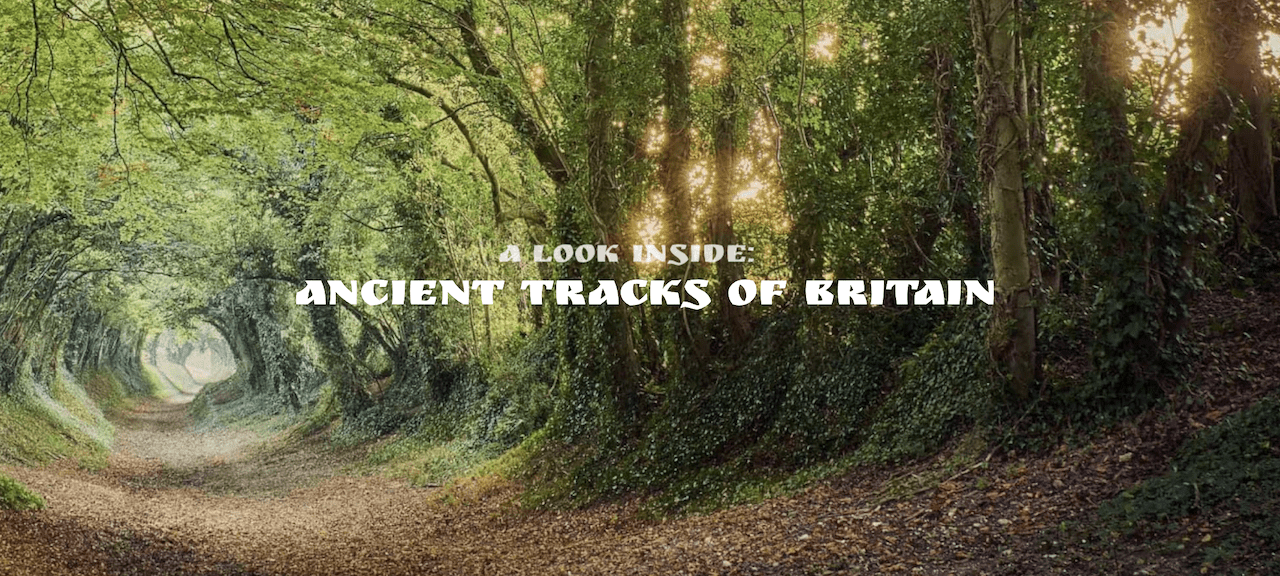
The Ridgeway and Ancient Tracks of Britain group is an unlikely meeting place of deep mysticism, nostalgia and wonderment. With a hefty membership, and almost constant publication of various photos – amateur and professional – it is like a market town for like mindedly bucolic folks.

The Fairy Bridge of Glen Creran, Fas na Cloiche
It’s a hobby that one can return to continuously, not least because the constant rotation of the seasons means tracks are rarely the same two visits in a row. But while the foliage, tree cover and colour, and sod can change, the tracks and their destinations remain stoically present. Cut across the land thousands of years ago by cattle drovers, rural dwellers on their way between farmsteads and fields, or to provide links to neighbouring long barrow tombs, these tracks became the basis of transportation for millennia.
The two oldest purpose built roads in the world are British. The Post Track and Sweet Track in the Somerset levels near Glastonbury are walkways consisting of planks of oak laid end-to-end, supported by crossed pegs of ash and lime, driven into the underlying peat, and are dated to the 3800s BC. It is hardly surprising then, that there is such a community of obsessives in Britain.

Long Causeway, Stanage Edge

Track underneath an ancient Beech tree on the Goodwood Estate near Chichester in England
The Lindholme Trackway, built a little later (2900–2500 BC), is a prime example of historiography through archaeology: it fits within a trend of narrowing width and increased sophistication during the third millennium BC, with some arguing that this shift related to the growing complexity of wheeled transport at the time.
The second focus of this group is on ‘Ridgeways’: a little spoken of method of road building which exploits the hard surface of hilltop ridges for use as unpaved, zero-maintenance roads. In medieval and later times, ridgeways in England were used as drovers roads, but others were more likely to have been processional ways, such as the one leading to the gigantic temple at Avebury in Wiltshire.

A deep hidden footpath in West Dorset

Avonwick Cobbly walk, Devon. Photo: Sheron Vowden
On British hills, the line of tracks often run a little below the actual crest of a ridge, possibly to afford some shelter from the wind or more likely to avoid travellers presenting themselves to wandering marauders as a target on the skyline. These ancient trackways only descend when necessary to cross valleys. As such, they are a polar opposite to modern-style roads, which tend to run along the valleys and only ascend when necessary to cross the hilltops.
Wanting to know everything there was to know on these mystical places, I found myself in conversation with Giles Watson, the liege lord of the group of now more than 25,000. A poet and writer, Watson found himself drawn to the ancient paths in the seven years he lived in Uffington in Oxfordshire. After starting to photograph the tracks and ridgeways as illustrations for his words, Watson says that “one of the things that makes them so eternally fascinating is the sense of connection with people from the past.”

The old Roman road at Halnaker tree tunnel, West Sussex

A hollow way in Burnham, Kent
Indeed, these paths are essentially ancient monuments that traverse large tracts of the English countryside, connecting other ancient monuments. “…when you’re walking this path, itself made of chalk which was once at the bottom of an ocean and still bears the fossil sea urchins and brachiopods to prove it, those ancestors who walked the same path in ancient days can seem tantalisingly close. It’s their marks in the fields – the strip lynchets and ramparts – and we visit their tombs and barrows. There’s a sense of connection, and sometimes in those places, the veil feels very thin.”
Maybe even more so than the historical relationship, it is the reconnection with the natural world that matters. Even when these ridgeways and paths are cutting through land impacted with mechanised agriculture, they have taken the mantle of wildlife corridors: their verges covered with hedgerows and wildflowers, inhabited by insects and birds. Watson says that “You can be there, surrounded by nature, perhaps at the site of an ancient village where the marks of the plough are still visible in the sward, and look up to see vapour trails of planes. There are moments on those paths when everything seems to come together.
The senses are fully alert … the rhythm of walking drives it into your memory.
“Personally, I’ve never felt so present as I have when walking those paths. The senses are fully alert, and there’s a tendency to stop and observe. And when you’ve noticed, say, an orchid that you’ve never seen before, the rhythm of walking drives it into your memory.”
It’s easy to wonder if a lot of the sense of connection comes from a deep mysticism, or maybe even nostalgia. I say nostalgia because this is a land that has been inhabited and travelled for millennia, and a landscape – though shaped by humans – is still subject to the power of nature. Indeed, a ridgeway is one of the best examples of symbiosis between humans and nature: it uses the land atop the ridge as a bridge in the sky over forests and rivers and valleys.

Wayland’s Smithy, by Edelgard Chivers
But what about mysticism? Are the people in this group all druids, who meet in the ancient clearings to sacrifice lambs? I think not. “It’s a very solid kind of mysticism”, explains Watson, “because it’s connected to stones that are cool to the touch and covered with lichens, paths which crunch in a very satisfying way under the feet, and the challenge of reaching the next rise where the Ordnance Survey map tells you there’s a tumulus or a sarsen. And that kind of solid mysticism – that sense that there is spirit in life but that it is connected to something very palpable and physical – is exactly what a lot of people need in a pandemic.”
Places like the ancient chambered tomb at Wayland’s Smithy change endlessly through the seasons. In spring “it is a very light and airy place … when the new leaves are breaking out of the buds and the cowslips are flowering.” In summer, “the leaves have darkened, and there are shady patches among the trees and stones.”

Photo by Hedley Thorne
When autumn comes “everything turns bronze under the falling beech leaves”. And in winter, “the big sarsen stones are cold, looming presences. That particular tomb is aligned so that the winter solstice sun would have shone directly into the burial chamber in Neolithic times, when the trees weren’t in front of its entrance. It is still an eerily atmospheric moment when the solstice sun rises there.”
Perhaps the attraction of the tracks and ridgeways for myself and all these other people are not in the things or places at either end of them. Rather, it seems to be the very act of connection, not only between these places, but also to a time long gone. I’ll leave you with the word ‘hiraeth’, a Welsh word that has no real English translation. Many have tried to make sense of it, but the closest I can muster is a sense of homesickness or nostalgia – but for a place you have never really known.
Yet in this case, the ‘place’ is knowable, for it is here, in front of you, crunching beneath your feet. The place is a track to nowhere in particular, but a journey in time nonetheless.
To join the group, click here.
Master Your Track Vocabulary
A BYPATH (14th C) is a remote or seldom-used path.
A RACK (15th C) is a steep uphill path.
A TRODGATE (15th C) is a trampled footpath
A RACKWAY (mid 17th C) is a path through a wood.
A LOKE (late 18th C) is a narrow grassy path or lane.
A MUDPIKE (19th C) is an unpaved path.
A JITTY is a shortcut between tracks. It is usually steep and often with steps.
A RACK is used in forestry where you fell two rows of trees together creating a path wide enough for forestry vehicles.
A BRIDLEWAY is a route where – in addition to walking – people may also ride or lead horses.
A BAULK (Danish origin) is used for a cut through path in Bedfordshire – the equivalent of ginnel or snicket. It is the strip of land left uncultivated in the common field before enclosure.
- Want to write for us? We’re looking for the best British arts and the people that make it, from Land’s End to John O’Groats. Have a look at our pitching guidelines.




